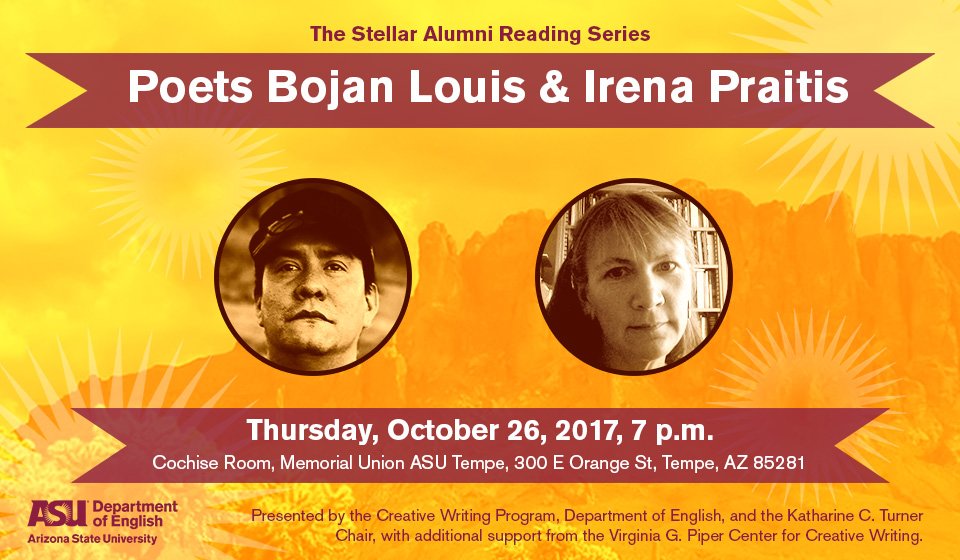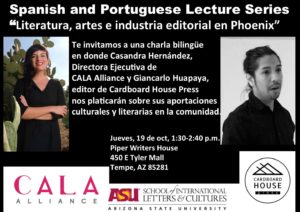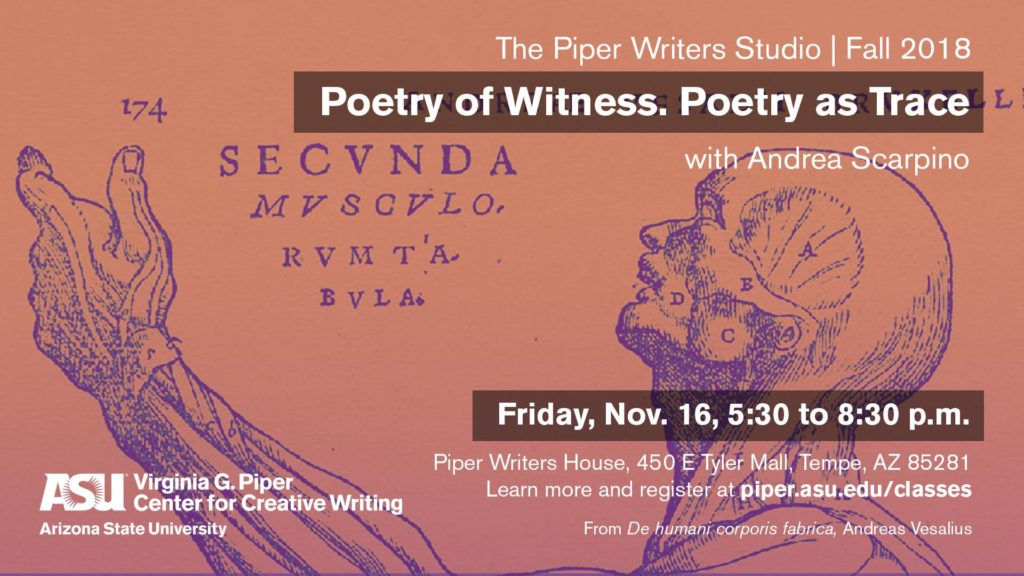
Event Description:
Poetry of Witness. Poetry as Trace with Andrea Scarpino
Date: Friday, November 16, 2018, 5:30 to 8:30 p.m.
Location: Piper Writers House, 450 E Tyler Mall, Tempe, AZ 85281
Individual Course Cost: $119 Regular, $107 ASU, $99 Student
Two-Course Bundle: $210 Regular, $189 ASU, $175 Student
Poetry of the Body with Andrea Scarpino takes place the following day, Saturday, November 17, 2018 from 10:00 a.m. to 1:00 p.m. Both classes can be bundled for additional savings.
To learn more and register, visit http://piper.asu.edu/classes/andrea-scarpino/two-poetry-workshops
About the Class:
The poet Carolyn Forché describes poems of witness as bearing “the trace of extremity within them . . . the poem might be our only evidence that an act has occurred.” Traditionally, this has meant bearing witness to atrocities like war or genocide, but we will take a more expansive look at the form and how to bear witness to our own lives and to our own stories. This could include bearing witness to homophobia or racism, environmental degradation, or sexual harassment (#metoo), but it could also include bearing witness to difficult relationships, to a health crisis, or to the death of someone we love. In this workshop, we will read and discuss poems of witness, generate our own poems of witness through writing prompts, and workshop our writing together.
About the Instructor:
Andrea Scarpino is the author of the poetry collections Once Upon Wing Lake (Four Chambers Press, 2017), What the Willow Said as it Fell (Red Hen Press, 2016) and Once, Then (Red Hen Press, 2014). She received a Ph.D. in Creative Writing from Bath Spa University and an MFA from The Ohio State University. She has published in numerous journals, is co-editor of Nine Mile Magazine, and served as Poet Laureate of Michigan’s Upper Peninsula 2015-2017. Her upcoming edited anthology is Undocumented: Great Lakes Poets Laureate on Social Justice (MSU Press).
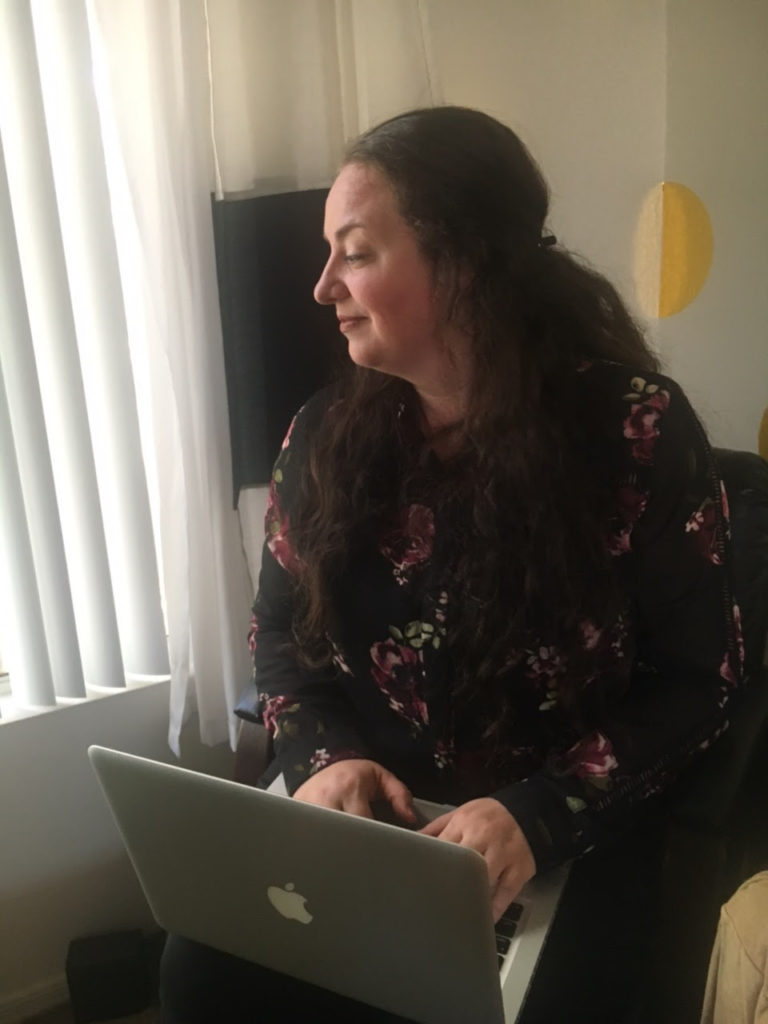 Today we are proud to announce that past fiction editor, H. Rae Monk, won an Osher Lifelong Learning Institute scholarship. Rae is a student in the new MA in Narrative Studies at Arizona State University, and past fiction editor for Superstition Review’s Issue 19. She is currently working on a project with the Osher Lifelong Learning Institute, which will enable OLLI students to connect with traditional ASU students through shared narratives. The project will encourage students to share true stories about their lives with classmates in order to strengthen empathy and open communication across generational divides
Today we are proud to announce that past fiction editor, H. Rae Monk, won an Osher Lifelong Learning Institute scholarship. Rae is a student in the new MA in Narrative Studies at Arizona State University, and past fiction editor for Superstition Review’s Issue 19. She is currently working on a project with the Osher Lifelong Learning Institute, which will enable OLLI students to connect with traditional ASU students through shared narratives. The project will encourage students to share true stories about their lives with classmates in order to strengthen empathy and open communication across generational divides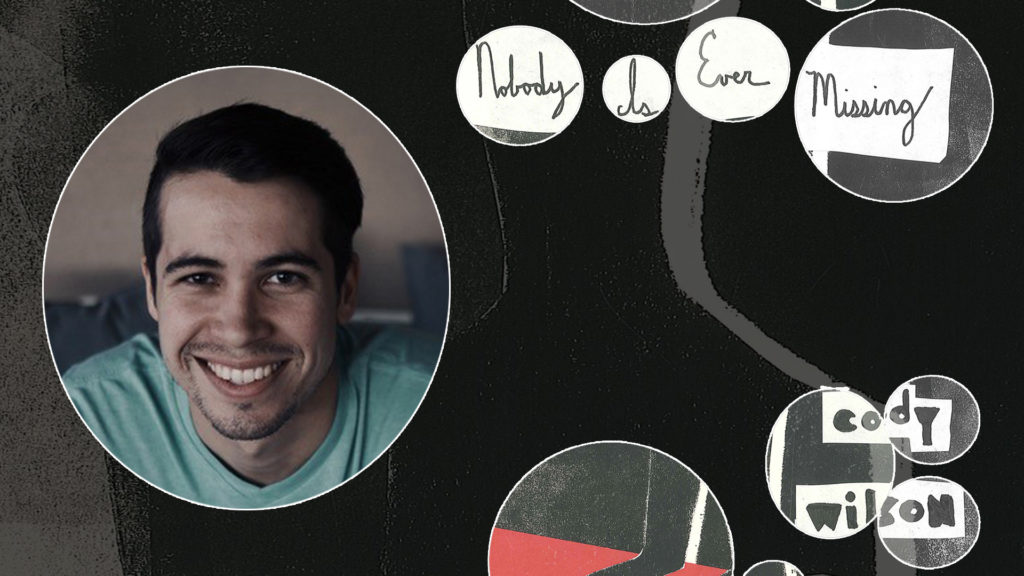 Date:
Date: 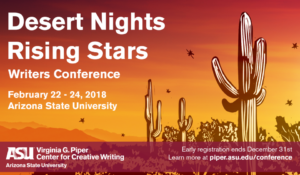

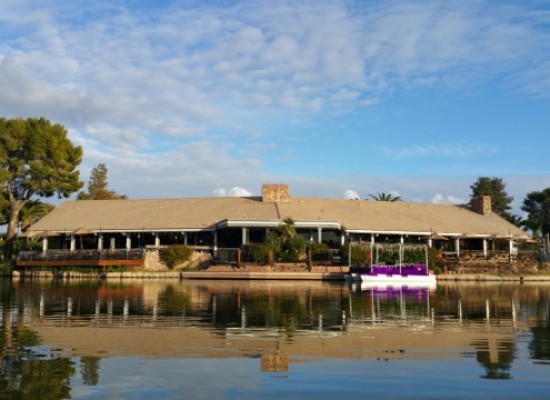 The next installment of the series will take place on November 7 from 7:30pm to 8:30pm, though you can come earlier to mingle, drink, and eat. You can find The Watershed at 5350 S Lakeshore Dr, Tempe, Arizona 85283.
The next installment of the series will take place on November 7 from 7:30pm to 8:30pm, though you can come earlier to mingle, drink, and eat. You can find The Watershed at 5350 S Lakeshore Dr, Tempe, Arizona 85283.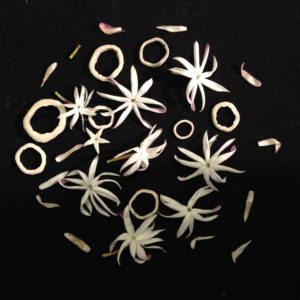 Anemomancy
Anemomancy